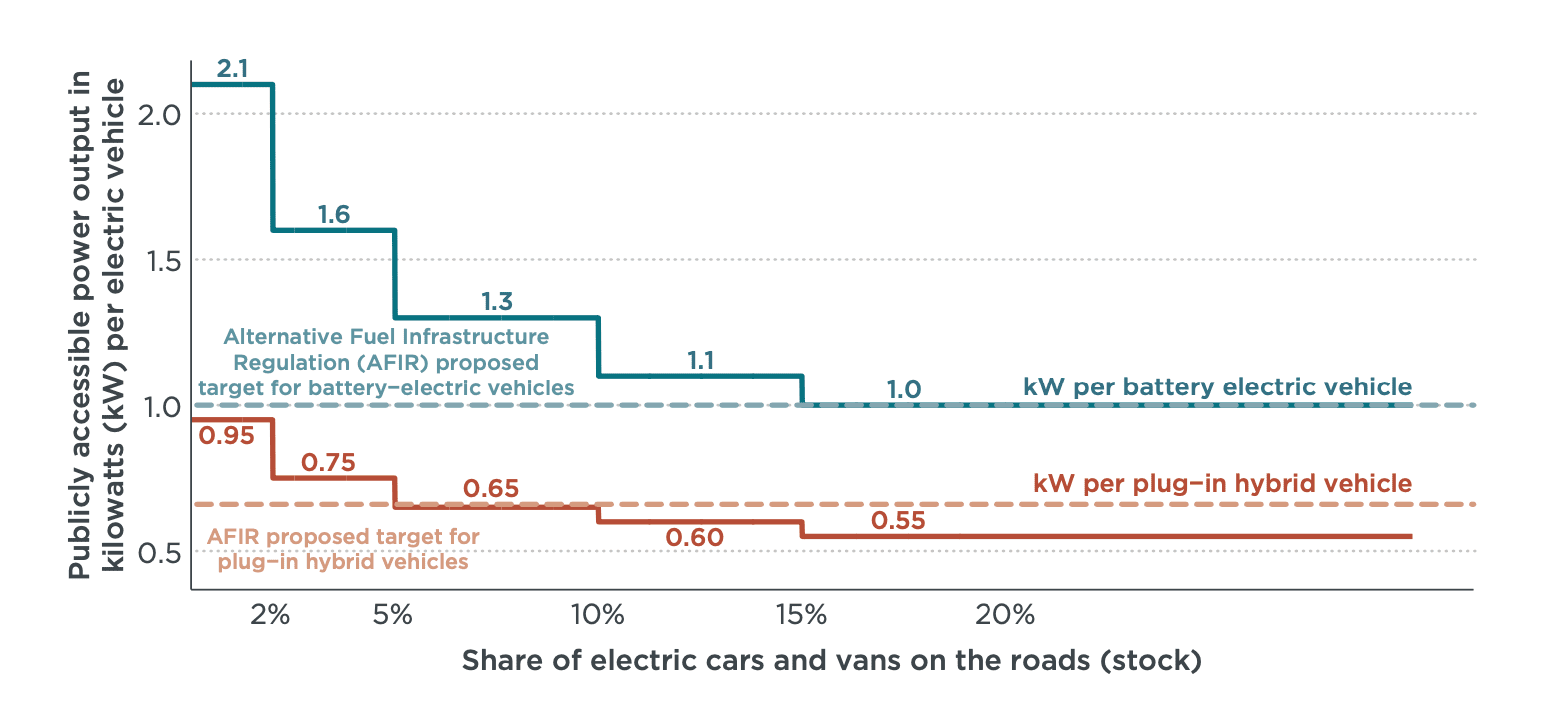Charging infrastructure to support the electric mobility transition in France
White paper
A review of the AFIR proposal: How much power output is needed for public charging infrastructure in the European Union?
This white paper assesses the total publicly accessible charging power output required per electric passenger car and light commercial vehicle (vans) in the European Union (EU) through 2030. We focus on battery electric vehicles (BEVs) and plug-in hybrid vehicles (PHVs) and compare our results to the Alternative Fuel Infrastructure Regulation (AFIR) proposal put forward by the European Commission in mid-2021. Flowing from our analysis, we draw the following conclusions and policy recommendations:
While AFIR targets are sufficient in the long term, higher targets that vary according to the electric car and van stock share are necessary in the short term. Our analysis shows that the total power output needed per electric vehicle (including BEV and PHV) is highly dependent on the share of electric cars and vans on the road. Our findings suggest that the targets of 1 kW per BEV and 0.66 kW per PHV as suggested in the AFIR proposal are insufficient on the short term. Due to lower expected charge point utilization, higher charging targets are necessary for markets with less than 15% electric vehicle stock share. This adjustment can be done through a stepwise approach.

Figure. Recommended total public power output per BEV (blue) and per PHV (red), as a function of Member States’ electric car and van stock share.
Beyond the AFIR, additional policies will be needed to ensure that home and workplace charging also keep pace with electric vehicle adoption. Public charging needs are highly sensitive to the level of access to private home and workplace charging, and the suggested targets for public charging capacity rely on broad access to private charging. If private charging access were decreased by 50%, the required total public power output would increase by 70% to 100%. Because private home and workplace charging are typically less expensive than public charge points to install and are also the most affordable and convenient charging option for drivers, this alternative scenario would likely result in greater system-wide costs. The EU and national governments could thus support home and workplace charging, including by strengthening the Energy Performance Building Directive (EPBD) with binding requirements that align with projected electric vehicle uptake resulting from CO2 standards and the AFIR’s targets for public power output.
Numerous funding schemes from the EU are available to support charging rollout as the private business case develops. Public funding has been key to deploying the early public charging infrastructure network across Europe and will be important to promote the development of public charging infrastructure accessible to all. With this in mind, the EU has established several initiatives to help finance public charging infrastructure for electric cars and vans. Most notably, the Connecting Europe Facility Transport program is aimed at transport infrastructure specifically. Most Member States are also leveraging funding from more flexible EU programs like the Recovery and Resilience Fund and InvestEU to build charging infrastructure for meeting the targets outlined in the AFIR. At the same time, private sector investments are increasing, including from energy providers and car manufacturers, and private sector charging installations are expected to grow further as the electric vehicle market matures.
